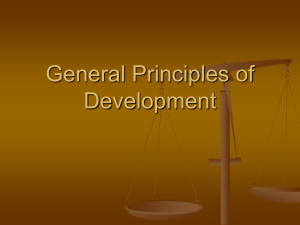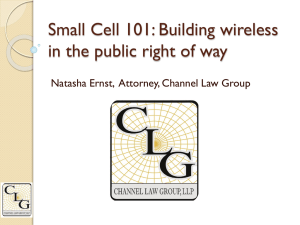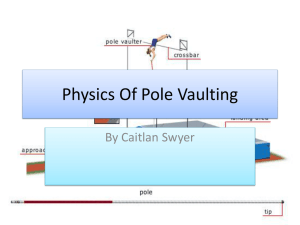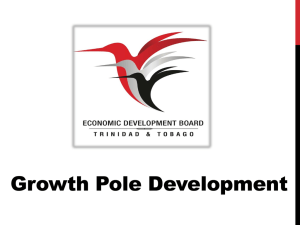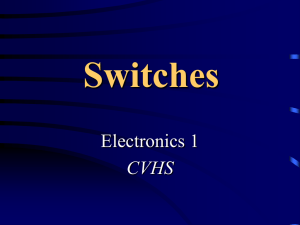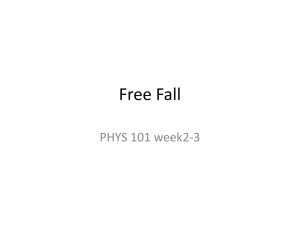file - European Urology
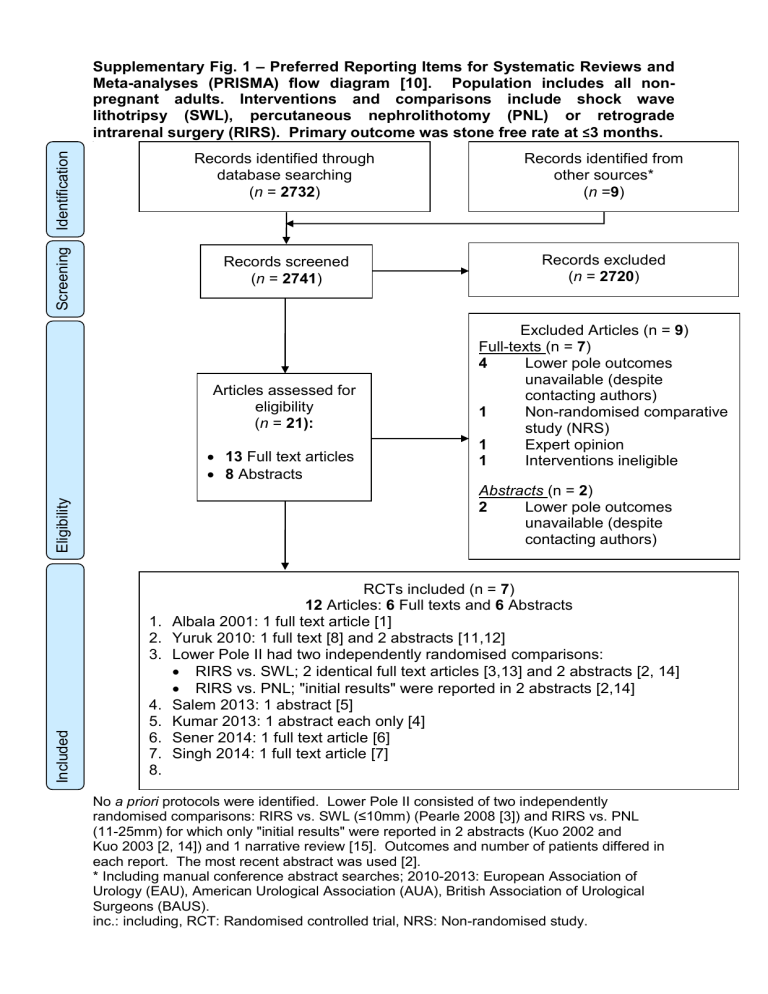
Supplementary Fig. 1 – Preferred Reporting Items for Systematic Reviews and
Meta-analyses (PRISMA) flow diagram [10]. Population includes all nonpregnant adults. Interventions and comparisons include shock wave lithotripsy (SWL), percutaneous nephrolithotomy (PNL) or retrograde a intrarenal surgery (RIRS). Primary outcome was stone free rate at ≤ 3 months.
Records identified through Records identified from database searching other sources*
( n = 2732 ) ( n = 9 )
Records screened
( n = 2741 )
Records excluded
( n = 2720 )
Articles assessed for eligibility
( n = 21):
13
8
Full text articles
Abstracts
Excluded Articles (n = 9 )
Full-texts (n = 7 )
4 Lower pole outcomes unavailable (despite contacting authors)
1 Non-randomised comparative study (NRS)
1 Expert opinion
1 Interventions ineligible
Abstracts (n = 2 )
2 Lower pole outcomes unavailable (despite contacting authors)
12
RCTs included (n =
Articles: 6 Full texts and 6
7 )
Abstracts
1. Albala 2001: 1 full text article [1]
2. Yuruk 2010: 1 full text [8] and 2 abstracts [11,12]
3. Lower Pole II had two independently randomised comparisons:
RIRS vs. SWL; 2 identical full text articles [3,13] and 2 abstracts [2, 14]
RIRS vs. PNL; "initial results" were reported in 2 abstracts [2,14]
4. Salem 2013: 1 abstract [5]
5. Kumar 2013: 1 abstract each only [4]
6. Sener 2014: 1 full text article [6]
7. Singh 2014: 1 full text article [7]
8.
No a priori protocols were identified. Lower Pole II consisted of two independently randomised comparisons: RIRS vs. SWL (≤10mm) (Pearle 2008 [3]) and RIRS vs. PNL
(11-25mm) for which only "initial results" were reported in 2 abstracts (Kuo 2002 and
Kuo 2003 [2, 14]) and 1 narrative review [15]. Outcomes and number of patients differed in each report. The most recent abstract was used [2].
* Including manual conference abstract searches; 2010-2013: European Association of
Urology (EAU), American Urological Association (AUA), British Association of Urological
Surgeons (BAUS). inc.: including, RCT: Randomised controlled trial, NRS: Non-randomised study.
Supplementary Fig. 2 – Assessment of Risk of Bias (RoB) according to a recommended tool for randomized controlled trials by the Cochrane Handbook for Systematic Reviews of Interventions [9].
Albala 2001 [1] did not report complications and Salem 2013 [5] did not report need for further interventions. Pearle 2008 [3] refers to the RIRS vs. SWL arm of the
Lower Pole II study; Kuo 2003 [2] refers to the PNL vs. RIRS arm about which only initial results were reported. Other studies were Kumar 2013 [4], Sener 2014 [6],
Singh 2014 [7] and Yuruk 2010 [8]. Two studies reported industry funding from endourological equipment manufactures and their authors declared financial interests in such companies [1
–3].
References:
[1] Albala DM, Assimos DG, Clayman RV et al. Lower pole I: a prospective randomized trial of extracorporeal shock wave lithotripsy and percutaneous nephrostolithotomy for lower pole nephrolithiasis-initial results. J Urol
2001;166:2072-2080.
[2] Kuo RL, Lingeman JE, Leveillee RJ et al. Lower pole II: Initial results from a comparison of shock wave lithotripsy (SWL), ureteroscopy (URS), and percutaneous nephrostolithotomy (PNL) for lower pole nephrolithiasis. J Urol
2003;169(Suppl.):486.
[3] Pearle MS, Lingeman JE, Leveillee R et al. Prospective randomized trial comparing shock wave lithotripsy and ureteroscopy for lower pole caliceal calculi 1 cm or less. J Urol 2008;179(Suppl.):S69-S73.
[4] Kumar A, Nanda B, Kumar N. A prospective randomized comparison between shock wave lithotripsy and flexible ureterorenoscopy lower calcyeal stones less than 2cm: a single center experience. J Urol 2013;189(Suppl.):e750.
[5] Salem A, Saad I, Emran A et al. Laser lithotripsy versus eswl for lower calyceal renal stones. J Urol 2013;189(Suppl.):e751.
[6] Sener NC, Abdurrahim Imamoglu M, Bas O et al. Prospective randomized trial comparing shock wave lithotripsy and flexible ureterorenoscopy for lower pole stones smaller than 1cm. Urolithiasis 2014;42:127-131.
[7] Singh BP, Prakash J, Sankhwar SN, et al. Retrograde intrarenal surgery vs extracorporeal shock wave lithotripsy for intermediate size inferior pole calculi: a prospective assessment of objective and subjective outcomes. Urology.
2014;83:1016-22.
[8] Yuruk E, Binbay M, Sari E et al. A prospective, randomized trial of management for asymptomatic lower pole calculi. J Urol 2010;183:1424-1428.
[9] Higgins JPT, Green S. Cochrane Handbook for Systematic Reviews of
Interventions version 5.0.2. The Cochrane Collaboration, 2011. Available from
URL: http://www.cochrane-handbook.org/ [accessed July 2014].
[10] Moher D, Liberati A, Tetzlaff J, Altman DG, PRISMA G. Preferred reporting items for systematic reviews and meta-analyses: the PRISMA statement.
PLoS Medicine / Public Library of Science 2009;6:e1000097.
[11] Yuruk E, Binbay M, Sari E et al. Prospective randomized trial comparing percutaneous nephrolithotomy, shock wave lithotripsy and observation for asymptomatic lower pole calculi: Initial results. J Urol 2009;181(Suppl.):494.
[12] Yuruk E, Binbay M, Sari E et al. Prospective randomized trial comparing percutaneous nephrolithotomy, shock wave lithotripsy and observation for asymptomatic lower pole calculi: Initial results. Eur Urol Suppl 2009;8:458.
[13] Pearle MS, Lingeman JE, Leveillee R et al. Prospective randomized trial comparing shock wave lithotripsy and ureteroscopy for lower pole caliceal calculi 1 cm or less. J Urol 2005;173:2005-2009.
[14] Kuo RL, Lingeman JE, Leveillee RJ et al. Lower pole II: Initial results from a comparison of extracorporeal shock wave lithotripsy, ureteroscopy and percutaneous nephrostolithotomy for lower pole nephrolithiasis. J Endourol
2002;16 (Suppl.):A60.
[15] Raman JD, Pearle MS. Management options for lower pole renal calculi. Curr
Opin Urol 2008;18:214-219.



